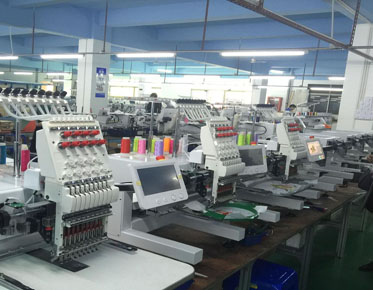Using Vectors To Digitize Images for Embroidery
Vectorization is the process of converting
physical data into a digital vector-based format. This process allows for
accurate, efficient and scalable storage of vectorized images and other
geographic information in a digital environment. The use of vectors further
enhances this process by providing an effective means to plot physical location
in the digital domain and thus enhances this method even further. Through use
of vectors instead of pixel based imagery, users can leverage higher clarity,
precision and scalability when embroidery digitizing.
The benefits of vector digitizing include
creating expandable logos, ensuring uniformity across multiple projects,
maintaining clean lines regardless of size, accuracy when copying images, and
flexibility when editing existing artwork.
All of these features make vector digitizing
a powerful tool for quickly creating a professional-looking design.
Also, since vector files are much smaller
than their raster files; They take up less storage space and reduce the overall
costs associated with digital file management.
How to digitize vectors
Vector digitizing is an important part of
using computers to create visual effects. Vector graphics allow the creation of
high-resolution images that can be easily and quickly resized, manipulated, and
saved to a variety of digital formats.
This makes vector digitizing an important
skill to learn when working with certain design software programs.
Vector digitization involves converting
raster data into vector data by using points to trace the boundaries of shapes
in an image. By manipulating vector data, designers can create complex shapes
with smooth curves that are more realistic than simple polygons or straight
lines.
With vector design, objects can be grouped
into layers and then resized without losing any visual quality because they are
resolution independent and maintain sharp edges even after scaling or rotating.
Additionally, a variety of colors and
textures can be added to give the image greater depth and texture.
Tools needed for vector digitization
Vector digitizing can be done by using vector
graphics software, such as Adobe Illustrator or CorelDraw. The advantage of
vector digitization is the ability to process image data in a way that
preserves its original quality.
In order to make the best use of this
technology, it is important to know the right tools it requires.
The main tools required for vector
digitization are scanner and vector graphics software. Using these two devices,
you can create high-quality scanned images that can be used to easily create
accurate digital files.
In addition, depending on the type of project
you're working on, there may be specialized hardware and software that can make
your task easier.
Possible challenges of vector digitizing
Vector-based graphics are resolution
independent and can be resized while maintaining the sharpness of the image.
While vector digitizing has many advantages over traditional art production
methods, the technology still has some potential challenges.
A common challenge when using vector
digitizing is choosing the best type of graphics file to use for your project.
Different graphic file formats have different
levels of detail and compression, which will affect the accuracy of capturing
each element of the artwork in digitizing form.
Another possible problem is dealing with complex shapes or designs, which may require more time to recreate in vector form than simple designs because of their complexity and the precise calculations involved in their transformation.
In short, vector digitizing is a powerful
tool for image processing and modification. It allows you to quickly and
accurately convert images from raster graphics to vector graphics, as well as
modify vectors in creative ways. With the right tools, vector digitization can
be a valuable asset to any graphic artist, enabling them to produce high
quality artwork for their projects.


